Buying your first handgun can be a trying experience because you must consider training and practice needs as well as your actual purpose for buying the gun. It is best to start off by seeking help from experienced gun owners that have worked with many different gun models and can help you narrow down the options.
Why Do I Need A Handgun?
Before you even begin asking about different handgun models, you must have a clear idea about why you want the gun and how you are going to carry it. Are you looking to own a gun for self defense, to protect your family, and to protect others when they are being victimized by thieves, robbers, or others who wish to cause harm? Or, are you more interested in target shooting or hunting small game?
At this stage, you should do some research on bullet calibers and handgun barrel sizes so that you can get some ideas of what the gun will actually look and feel like. Remember the following points:
- Derringers and other small barrel guns are easy to conceal, but they may have a lot of felt recoil. It doesn’t matter if you can holster them more easily in a flash bang or pocket holster if the weapon itself will give you bad habits during training or be hard to aim and fire in a time of need.
- The “sweet spot” in terms of caliber size and felt recoil is different for every person and will change with time, experience, and strength in the hands and wrists. If your main goal is self defense, then plan to go to a shooting range where you can practice regularly.
- Ammo cost and availability are always going to be a consideration. Buying a .45ACP as a first time handgun just because it has a lot of stopping power doesn’t make much sense even if your wrists and hands aren’t strong enough to take the recoil. You can still get good stopping power from a 9 mm or a .357 Magnum round and save money at the same time.
Choosing Between Revolvers and Pistols
Once you know what you are going to use the gun for, the next question is which model will suit you best. Do you want a revolver or a pistol?
Revolvers are a type of handguns that use a revolving cylinder with chambers to hold spare ammunition. For small caliber revolvers such as the .22 calibers, the cylinder may hold between five to ten rounds of ammo. For the larger calibers such as those that shoot .38 Special or larger, the cylinder may hold between five to six rounds. There are also some revolvers that hold seven rounds of .357 magnum or .38 Special ammunition.
A revolver allows the shooter to shoot multiple times without stopping to reload the weapon. After you fire a round, the hammer is cocked and the cylinder rotates the next chamber in the cylinder, which is then aligned with the barrel. This can be done by the shooter pulling back the hammer and is commonly known as single action. Double action is used when the shooter only pulls the trigger. Here the the trigger must first lift the hammer, rotate the cylinder, and then release the hammer to fire the revolver. Once all the bullets are fired, you will have to slide the cylinder out and remove the bullet casings before inserting more bullets.
Because of the revolver’s simplicity in loading and firing, it makes it an excellent choice for the new shooter. Fewer parts mean there is less to remember in a crisis situation. The less chance you have of forgetting to do something, the greater the chance you will be able to fire the gun successfully. Since revolvers have a less complicated structure, there is also much less chance of mechanical failure. They are also very easy to clean and maintain.
A pistol, or “semi-auto pistol” uses the energy of one shot to reload the chamber by cycling the action for the next shot. As the slide travels rearward, the spent casing is ejected. A new round is stripped from the magazine by the slide as it moves forward, and is loaded into the chamber. This permits another shot to be fired as soon as the trigger is pulled again. This shooting operation continues until the magazine is empty. A semi-auto pistol can only fire one shot for each pull of the trigger.
Most single stacked magazines hold between six to ten rounds. A double stack magazine can hold between ten to twenty rounds of ammunition depending on the make and model of the pistol. While the increased number of rounds may seem appealing, there are some drawbacks to pistols.
First, if the shooter doesn’t grip the pistol correctly, there is a chance that the shooter’s hand may ride up the pistol grip and get cut by the bottom of the slide as the pistol fires. You will need to grip the pistol harder to solve this problem.
Sometimes a gun that seems to be in perfect working order may fail to feed a round into the chamber. To fix this problem, you need to start off by tapping the bottom of the magazine to ensure that it is seated properly. Next, you will have to rack the slide back and release it to make sure the chamber is loaded. Shoot if the situation demands it. In a crisis situation, both new and experienced shooters may forget to do this and panic. This is one thing you will not have to worry about with a revolver.
Pistols can also fail to push out a fired casing or “stovepipe”. To solve this problem, you must strip the magazine out of the magazine well. Shake the pistol in order to remove the spent casing. Next insert a fresh magazine and tap it to seat the magazine. Rack the slide back to load the pistol. Shoot if the situation demands it. It is not a good idea to put the old magazine back into the gun until you are sure that it isn’t broken.
If you wind up in a situation where you need to change the magazine, take the rounds from the suspected bad magazine and put them into the one that you know works. While stovepipes can take longer to fix, they can also create a good bit of panic in a situation. As a new gun owner, simply start off with revolvers. When you are ready to move into working with pistols, be sure to practice managing both failure to feed and stovepipes so that you do not have a problem at the worst possible moment.
Look at the pros and cons of each of these types of handguns and decide which one will be best for you. In general, I usually recommend revolvers for first time gun owners because they are easier to clean and less likely to develop mechanical problems. On the other hand, pistols can be fitted with larger magazines, which means you have more ammo in the gun to handle an emergency.
What Is The Best Caliber For You?
For the first time buyer of defensive handguns I would recommend the following. In revolvers I would recommend .357 Magnum. It will also shoot all of the .38 Special ammunition safely. Here you can shoot .38 Special ammunition for defense, training, or plinking.
If you are a handicapped or a disabled shooter you will have to choose a handgun that you are capable of using. This means that it might have to be a smaller caliber in a revolver such as a .22LR/.22Mag.
If a pistol is what you want and you do not have any disabilities, a 9mm semi-auto would be a good choice. The recoil is not too bad on the shooter, and the magazines come in single or double stacked. For first time shooters with disabilities that want a pistol, I recommend a .22 caliber to start with. Two other good choices would be the .32ACP or the .380ACP. Larger caliber guns come with increased risk of recoil problems and slides that are harder to work.
Narrowing the List of Gun Models
Now that you have some ideas about what the gun in relation to your abilities, it is time to start looking at models. Here are some things to consider and sources of information:
- Manufacturer websites. This is where you can gain insights about different models in the calibers you are interested. You can also learn more about warranty information and materials the gun is made from. Today, there are many good quality guns made from polymers and metal blends. Polymers also give you a wider range of gun color choices including pink, blue, orange, and green.
- Some of the best individuals to talk to about specific handguns are the people that own them and shoot them regularly. They can tell you the pros and cos of the handgun, and whether or not they felt it was worth buying.
- Check out your local gun shops and see what they have available. Before you buy from a specific store, do yourself a favor and check out each one with the BBB. Business rating is very important as well as how they handle complaints. If a gun shop has a bad reputation, you may be getting a gun that has hidden defects and wear.
- Gun shows – This is the perfect place to do some research on guns. You will find many experienced gun owners that may be willing to talk about their experiences. This is also a good place to actually look at a wide range of gun models and see how they compare to each other.
Getting Down to One Gun Model
After you are done with this process, your list of possible gun models should be down to three or four. At this stage, you are ready to start firing guns and seeing which model is actually best for you. Here are some viable ways to get hands on experience with each model of interest:
- Go back to the gun shops you may want to buy from and physically handle and work the actions of the handguns on your list. This is a good time to ask any questions you may have about using the gun and accessories that might be of use to you. If you cannot get the information you need at one store, go to another to get the needed information.
- This is the time to find out how the gun actually feels in your hand. Pay careful attention to how well your fingers fit onto the handle. If the handle is too small, you can ask to see if there are aftermarket grips available that will fit your hands better. Do not forget to make sure that your index finger can easily reach into the trigger guard to squeeze the trigger. The last thing you want is to have the trigger too short for your index finger length.
- You should also pay careful attention to the weight of the gun. Does it feel to heavy or too light? Is it too bulky for the holster you are planning to carry it in? If you are including pistols in your list, make sure that you can pull the slide back easily and efficiently. Pay careful attention to the slide. If it has not already been deburred, there is a chance it can cut into your hand when firing.
- Go to a shooting range that rents hand guns – This is the perfect place to test fire handguns that are of interest to you. Be sure to shoot all of the handguns on your narrowed down list. If those don’t work for you, go back to the list you chose these from to expand your options again.
- This is also a good time to shoot handguns with different caliber ammo. Once you have some shooting experience with your first gun, you can always spend some range time trying out different calibers to see if you can fire them safely and comfortably. Choose a handgun that feels good in the hand. It is very important early on to stay away from handguns with large calibers or heavy recoils. This can cause a shooter to develop bad shooting habits or possibly cause serious injuries to the shooter or individuals around them.
Choosing Between New and Used Handguns
It would be to your advantage to buy a new handgun in person from a gun dealer with a good reputation. This gives you a chance to talk to the seller, check over the firearm, and be sure the price is right. New handguns always come with warranties from the manufacturer. If there are any problems with the workmanship or materials, this is the best and cheapest way to have them taken care of.
If you decide on a used handgun because they are cheaper, stay away from the ones that are worn out. These handguns may seem like a good bargain, but buyer beware. When buying second hand firearms, there aren’t any warranties. They may also be an older model without upgrades, or key parts may be so worn out the gun won’t fire properly or develop problems that are expensive to fix.
When buying new or used handguns off the internet, you won’t have a chance to inspect the weapon before buying it. You must rely on the description of the firearm and photos of the weapon. If the handgun is misrepresented, it may be very hard to nearly impossible to get a refund, especially if the terms of the sale are “as is condition”.
Budget and Cost Considerations
Now that you know which gun will work for your needs, it is time to get down to actually making the purchase. To figure out reasonable price ranges, do your research carefully. Look online at both new and used offerings. Be sure to study sales data to see what the highest and lowest actual prices are for individual purchases. It is also important to get some ideas about how much the specific gun model sells for in your area versus online.
When you are ready to buy, always see if you can get a discount or if you can negotiate the price down. Don’t be afraid to walk away from a handgun sale if you feel uneasy about it or it is too expensive. Know what you want and don’t let sales people walk all over you. If the handgun is not what you want, walk away.
Even though finding the perfect first gun can seem like a challenge, there is much more work to be done. You will still need to have good training and practice as often as possible. Make sure that you take the time to learn how to clean, disassemble, and assemble your gun, as well as recognize the signs of wear. A gun can save your life in time of danger, help you hunt for food, and give you a competitive hobby.
Making sure that your first gun purchase is a successful and useful one is very important for long term responsible and rewarding gun ownership.


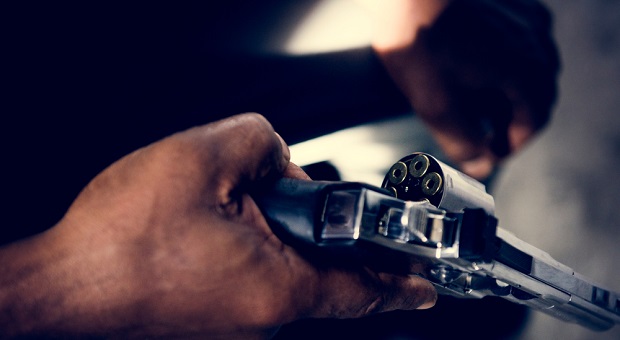

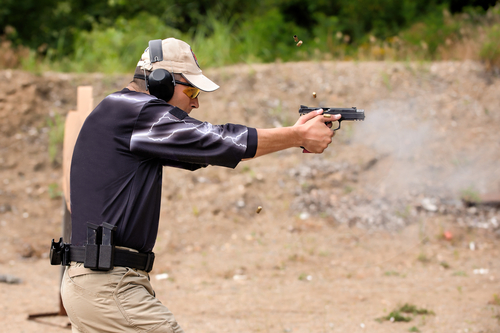



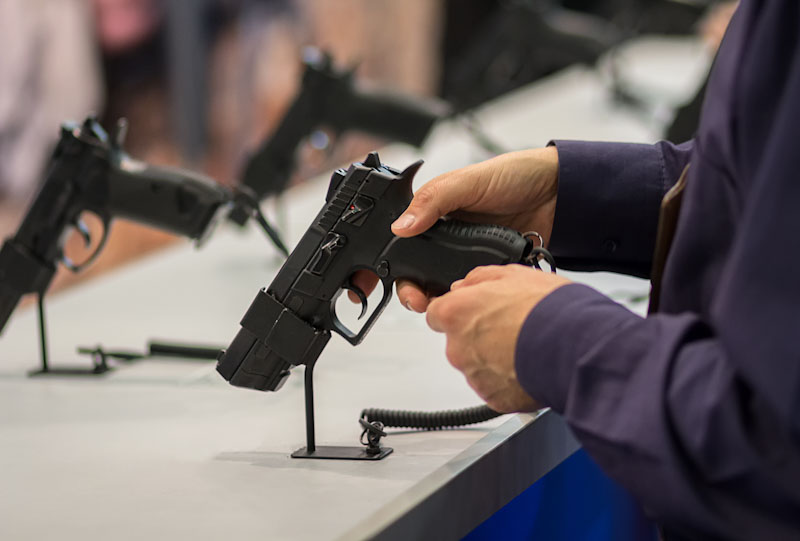
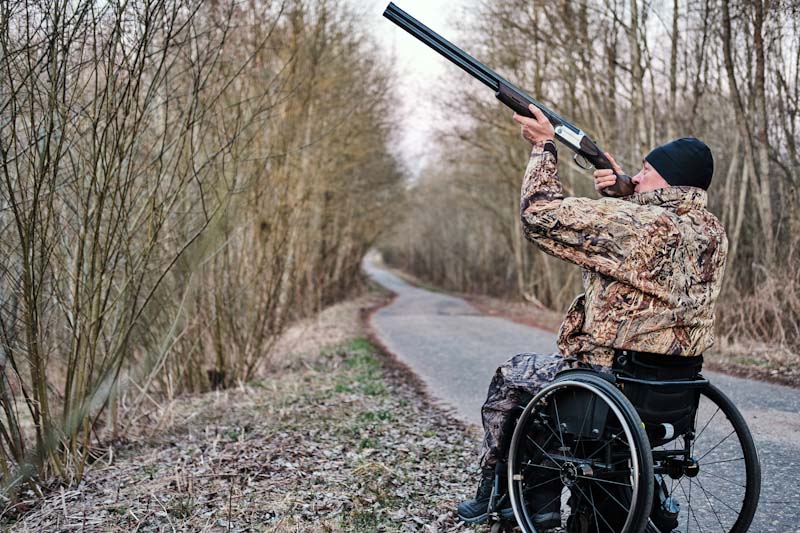
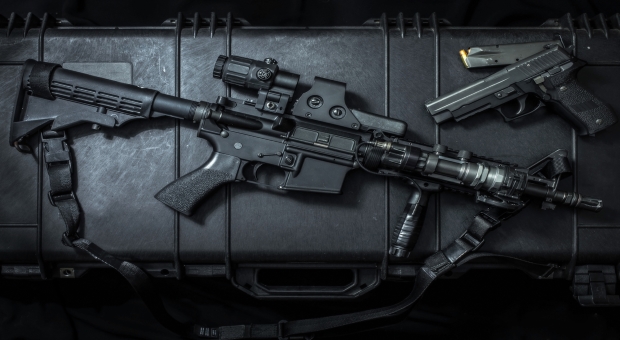
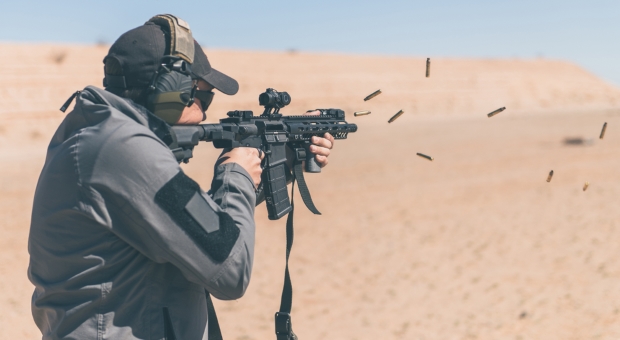

Bill in Idaho | April 26, 2018
|
Hey, Fred. My Compliments to you for a gentle yet thorough treatment of a Vital Topic. I am a long-time (35 plus yrs.) Teacher (I Hate the word Instructor) of firearms for women and beginners, and more recently, Sheriffs Deputies. Amen to your suggestions about Revolvers – they are Always on Safe when the hammer is “Down”. Also, I can “Speed Load” my S&W Mod. 57 ( .41 Rem. Magnum) faster than most shooters can change mags. My Mod. 57 with an 8″+ bbl. is Extremely accurate out to 100 yards. As for the ..357 Magnum, any wheel gun in .357 with a <9" bbl. is good for three things – 1. A Very DEAF Shooter, 2. In dim light – a BLIND shooter, and 3. A fair to midlin' Flame thrower. My Charter Arms Bulldog shoots Special handloads, .38 Spl. with a higher M.V. than the .357 in my 4" bbl. Kudos, Fred – Keep doing what you do so well.
Ron W. | April 26, 2018
|
Pretty good advice. I too am a retired (west coast) police officer, 30+ years, both military and police firearms instruction and competition. Seen the elephant. As to the caliber selection, I would suggest the choice of ammo is critical. Cheaper stuff for range and practice, with more expensive factory personal defense ammo for carry & defense. With modern self defense ammo, anything from .380 and up should do the job, bearing in mind that pistols are lousy fight stoppers. There are no magic bullets and one-shot-stops are rare. Plus of course training, training, training is of vital importance. Concealed carry class was NOT training.
Tim Taylor | April 27, 2018
|
Great information for those who have made the decision to be a responsible gun owner. The information in this article is critical for first time buyers. The next thing is your training, be careful on whom you chose to help you with your training. Then practice, practice & practice some more.
Dennis Andrews | April 29, 2018
|
I have never owned a firearm and am considering a purchase for home defense. My dad kept a 44 mag. military issue handgun under his pillow. What is the recommendation for that one weapon for home self-defense?….A shotgun, or a handgun?
Bill in Idaho | April 29, 2018
|
Hey, Dennis – Keep Asking GOOD Questions – we will All Try to Help. I don’t know about keeping a Shotgun (Even a “Shortie”) on the nightstand or under your pillow – h-m-m-m . . . I do know that Any “Long” gun has to have a lot of “Maneuvering” Room to help you at all – thus the big advantage of a handgun is always size. I personally recommend (to All of my New Beginning Students) – a Charter Arms Bulldog with a 4″ barrel. It is a real “Sweetheart” to carry and to shoot. It is rated for .357 Magnum – but Forget that Cartridge Forever. Buy and Carry ONLY .38 Special with Copper Jacket Round Nose (Wadcutter is OK), and start with the regular rated power. You can buy .38 Sp in +P Later on. My best wishes to you and to your success – Keep on keeping on. Bill
William Harrington | June 21, 2019
|
I am considering a Taurus Judge as it has the capability of firing a .410 Shotshell or a ..45 Colt using a 4inch barrel. I have not seen any writeups about this or similar guns.
William Halford | June 21, 2019
|
I was considering the Judge for a long time. But then a coworker, that’s had both a Judge and a S&W Governor, recommended the Governor. He said the Governor is more comfortable to shoot. The Governor was 6 shot versus 5, and in addition to .410 and .45 Colt, also shoots .45 ACP using moon clips. And having the extra choice of ammo is better when there’s an ammo shortage, because it makes it easier to find something that the gun will shoot. So all of that sold me on the Governor.
I keep it loaded with .410 for home defense, and keep 2 moon clips with .45 ACP with it for a quick reload, which for me is easier to load with than using a speed loader. And it shoots easy. Even with .410 in it (the highest recoil of anything it shoots, except maybe some .45 Colt +P ammo), a woman friend with small hands liked shooting it.
At the time I bought my Governor, I bought it for $150 more than what I could have bought a Judge for. Having the extra round, an extra ammunition choice, plus quick and easy reloading with moon clips, and being more pleasant to shoot, made it worth the extra cost to me. However, I don’t know the cost difference between the Governor and Judge now, and I think the Judge lineup has expanded to give more options than the Governor. So you’ll need to weigh the pros and cons of both.
Bill in Idaho | June 22, 2019
|
William and William: Just Remember – any handgun shooting .410 scatter shot, or .45 Long Colt Ammo will kick like a 3-Legged Mule. William in Idaho.
William Halford | June 23, 2019
|
Maybe with some hot loads or for some people,, but not really for me and anything I’ve shot in mine so far,
And if you had read my comments all the way through, you would see what I had to say about that. Yes, I actually have a Governor. Yes, I already know how it shoots. Yes, a woman friend with small hands actually enjoyed shooting it with both .410 and .45 Colt. Yes, she didn’t think it kicked bad either.
It’s not all that bad with any .410 ammo I’ve shot so far. And except for maybe some .45 Colt +P ammo, .45 Colt kicks a little less than .410 does. And .45 ACP is quite mild, although a little less accurate than .45 Colt.
My Governor is more comfortable to shoot than my 4″ S&W Model 19 .357, although that may have a lot to do with the Governor’s softer rubber grip versus the 19’s hard factory wood grip.